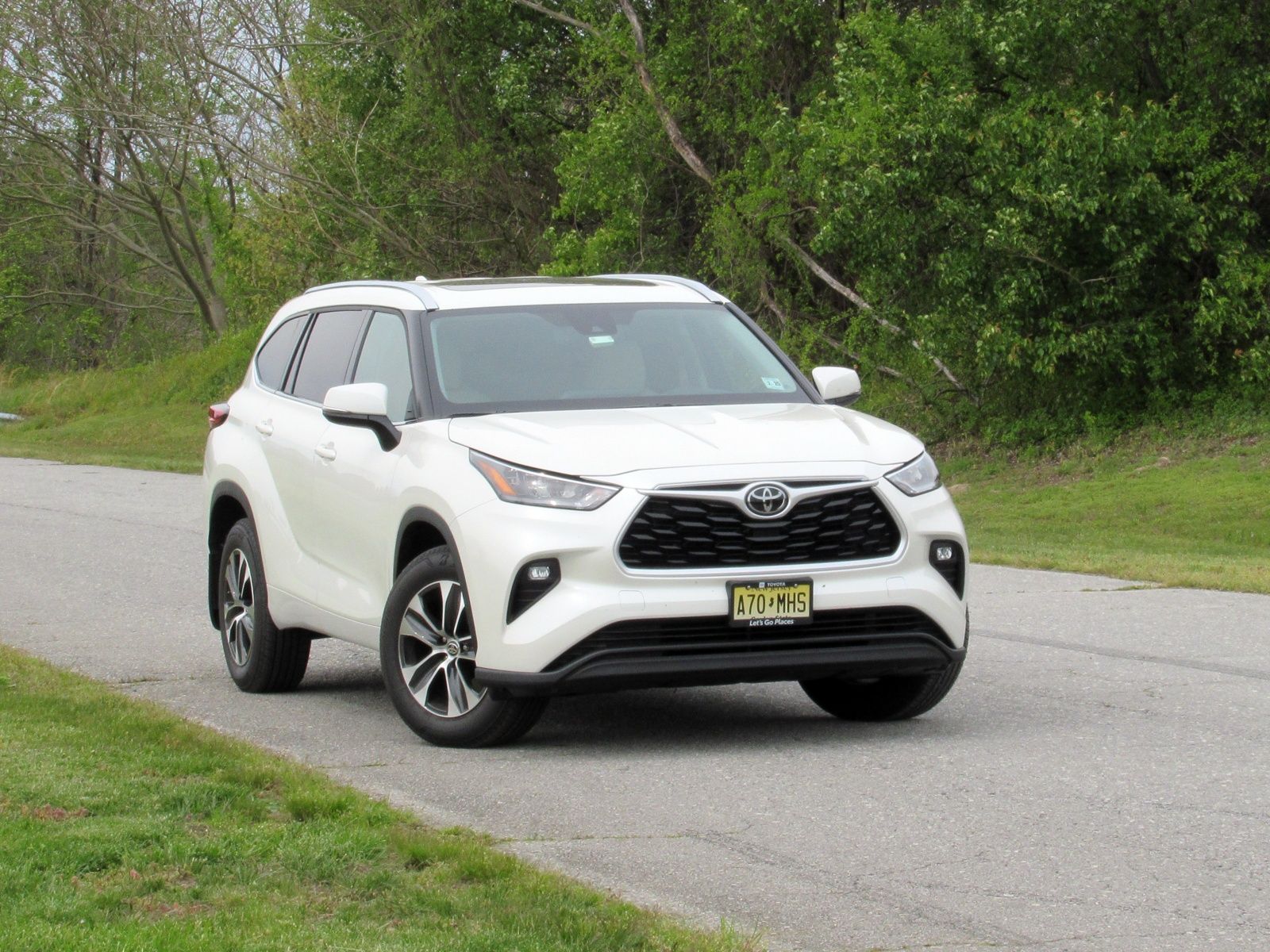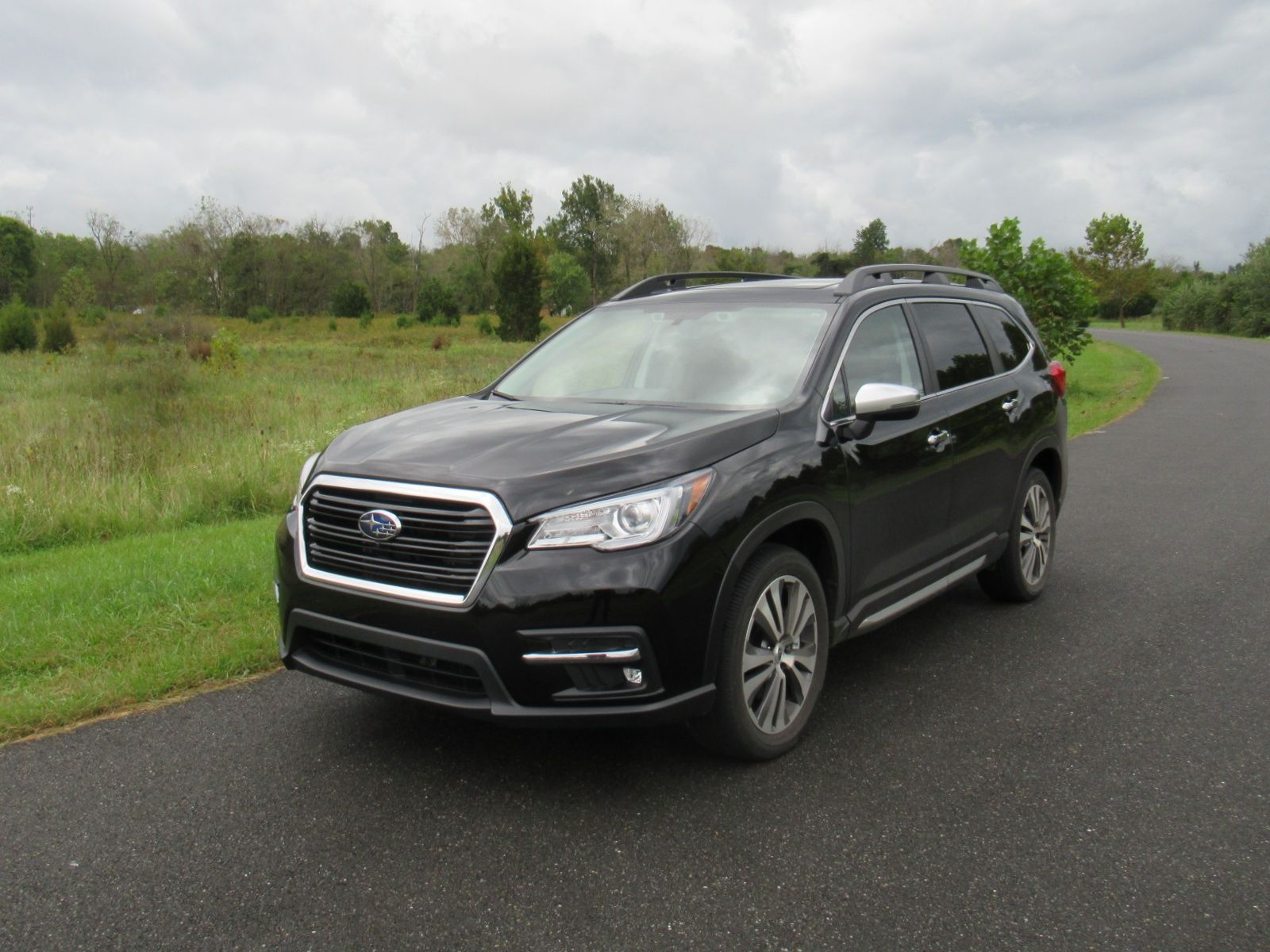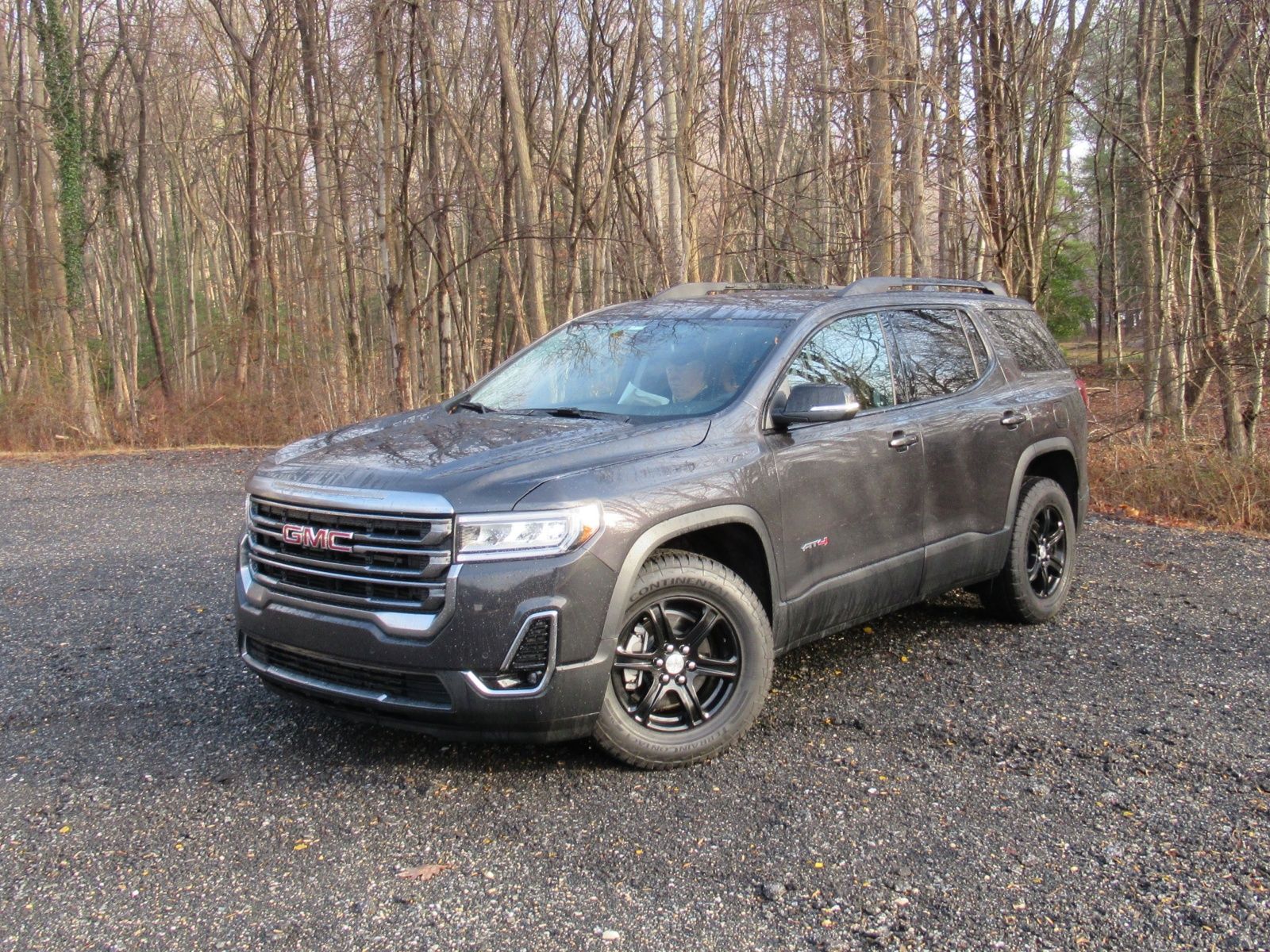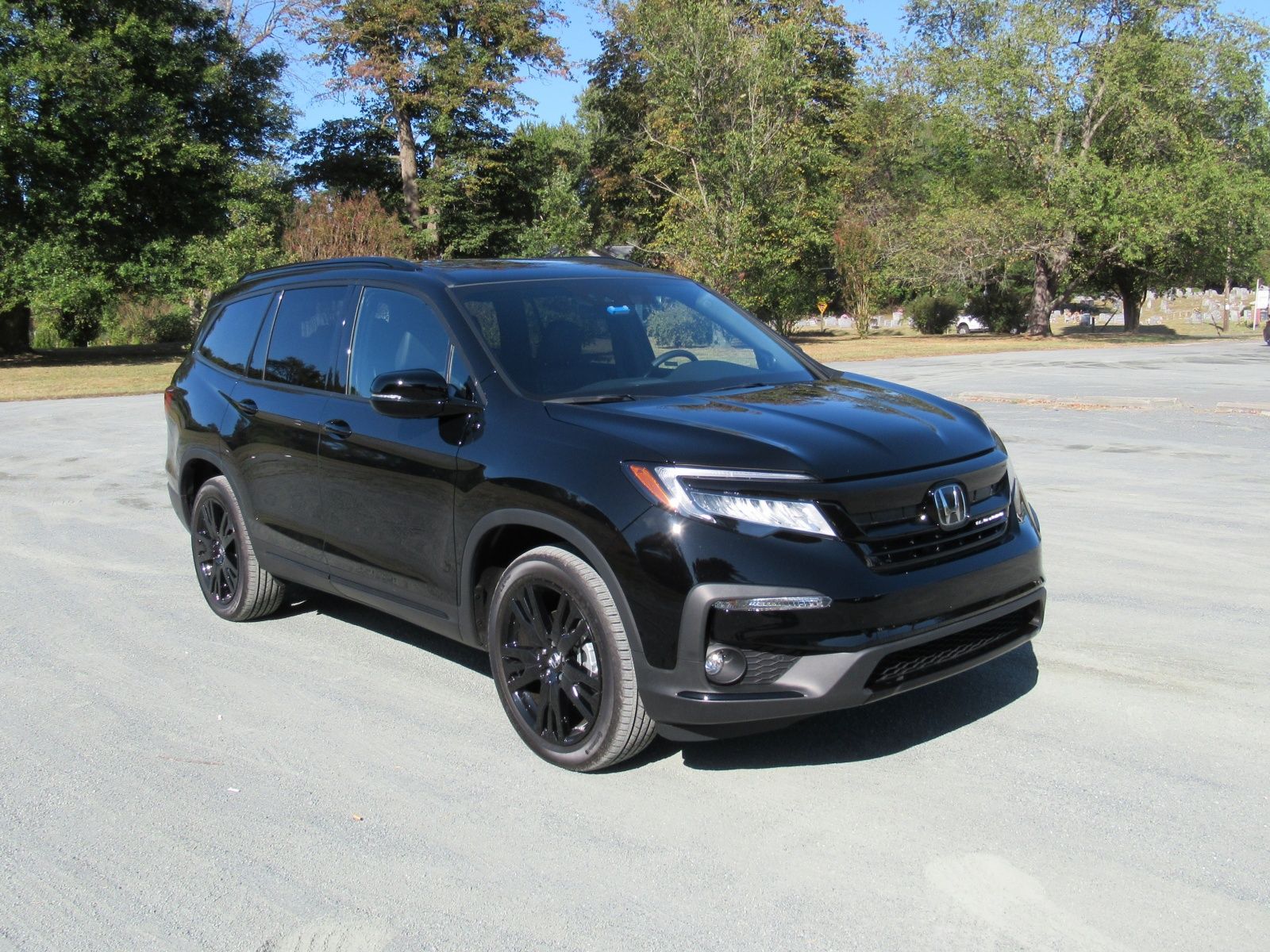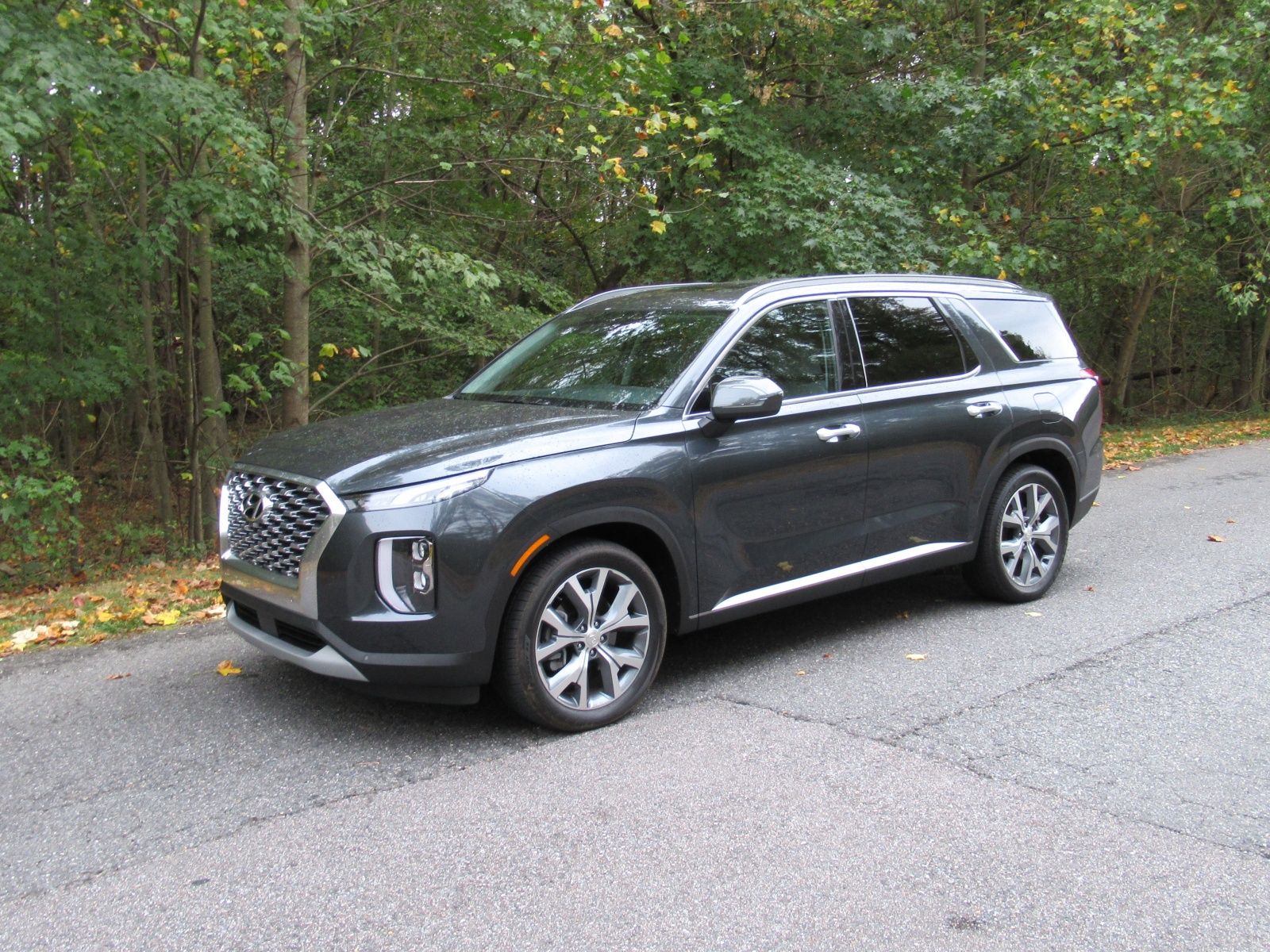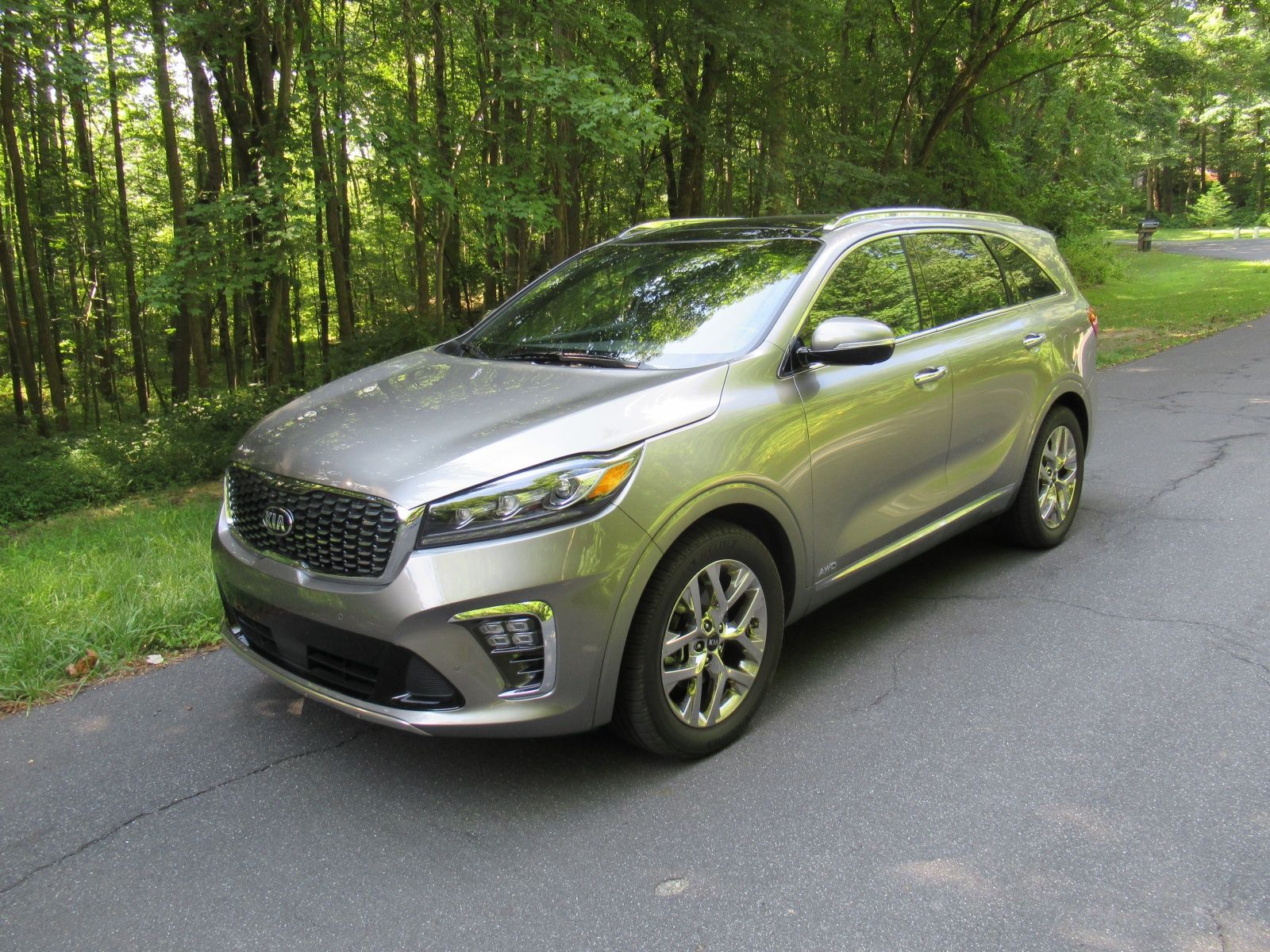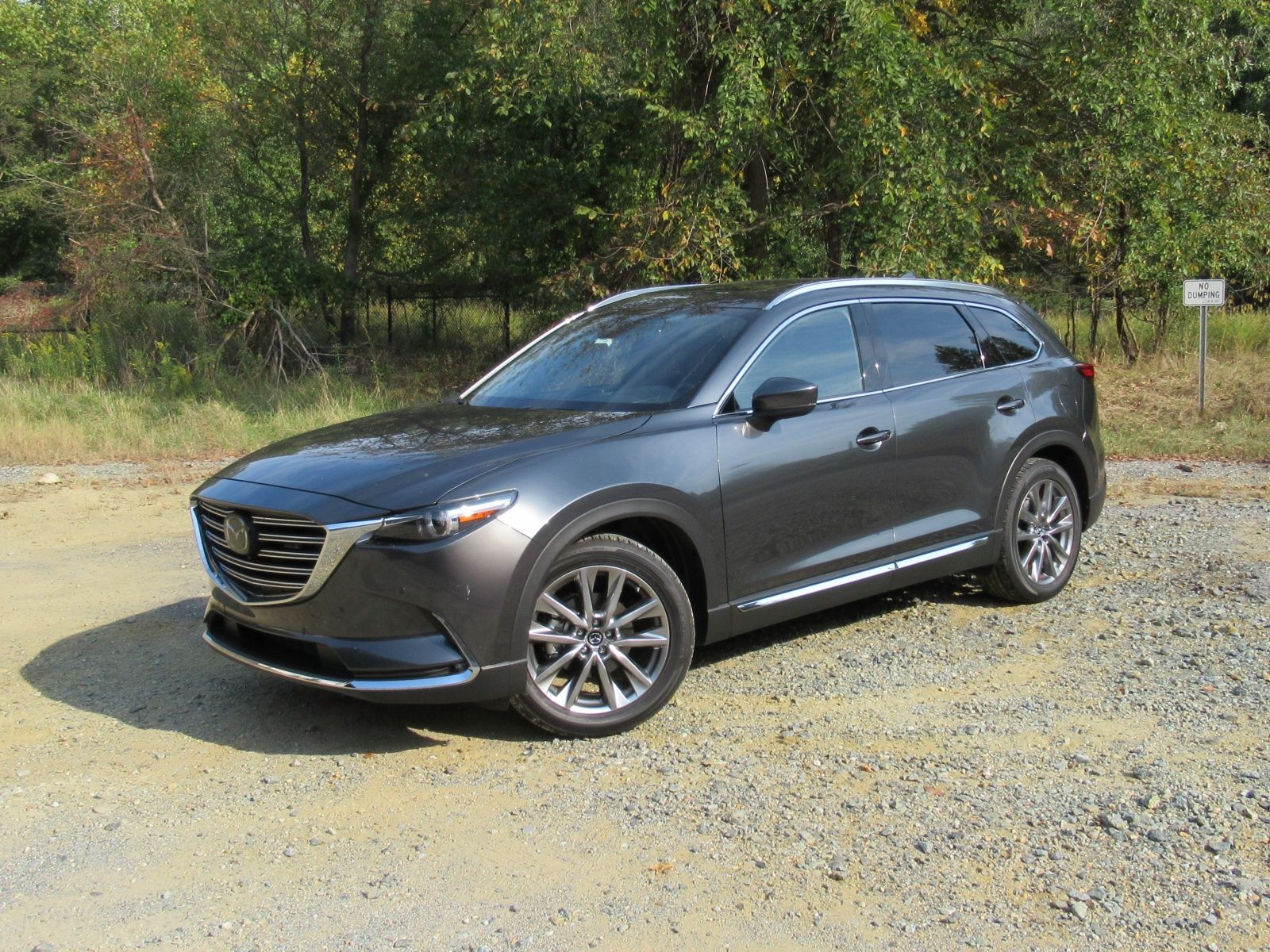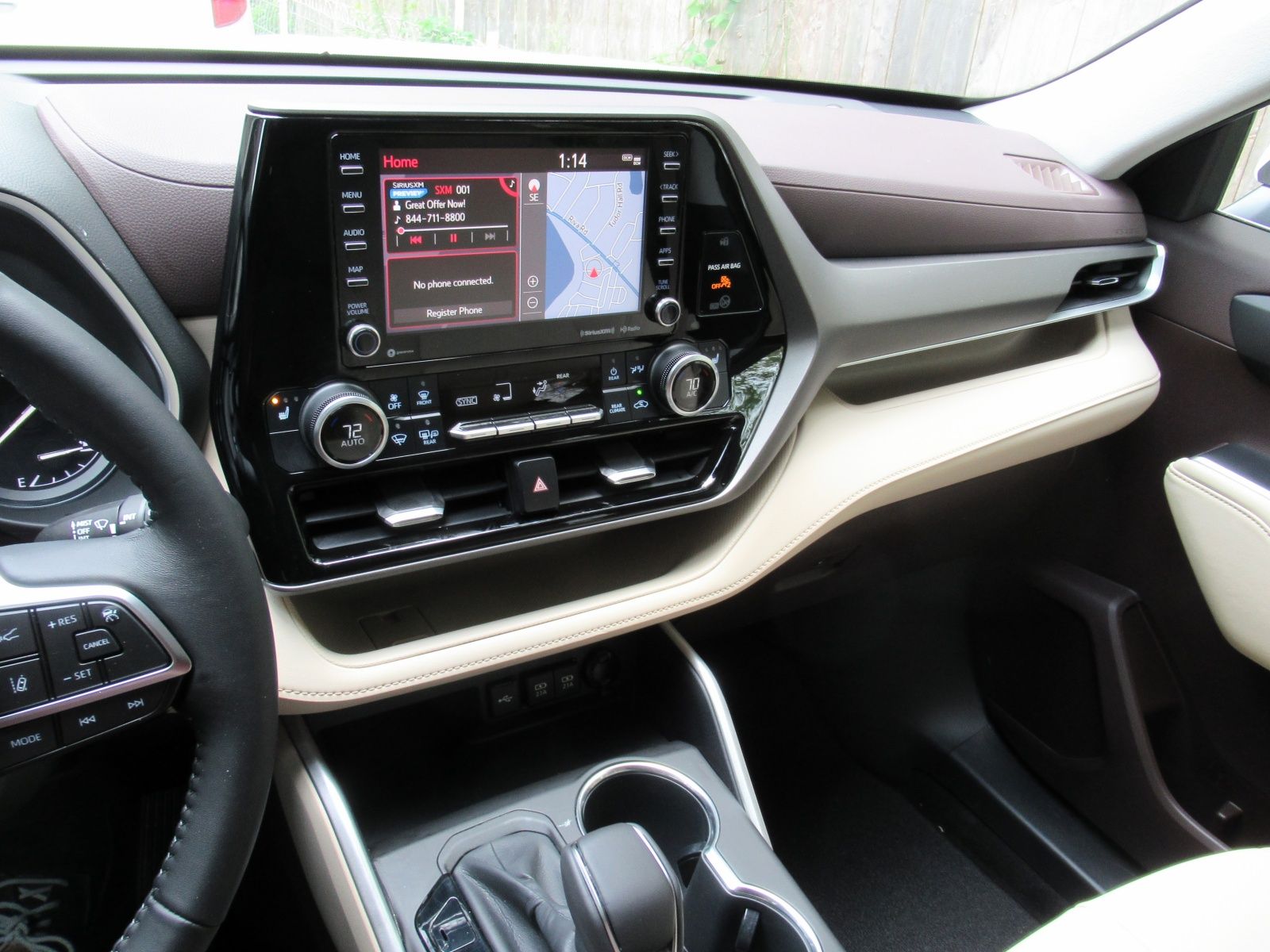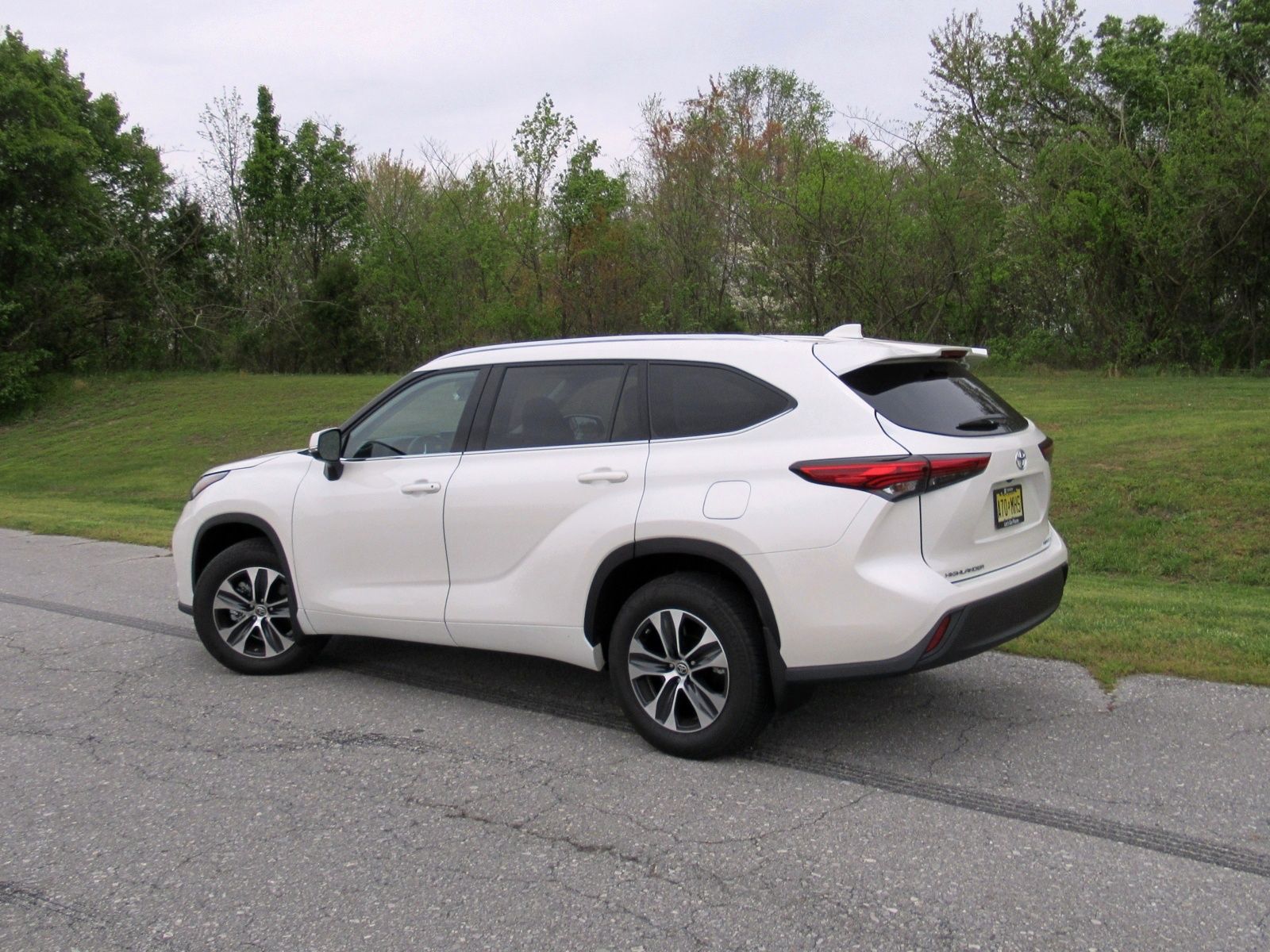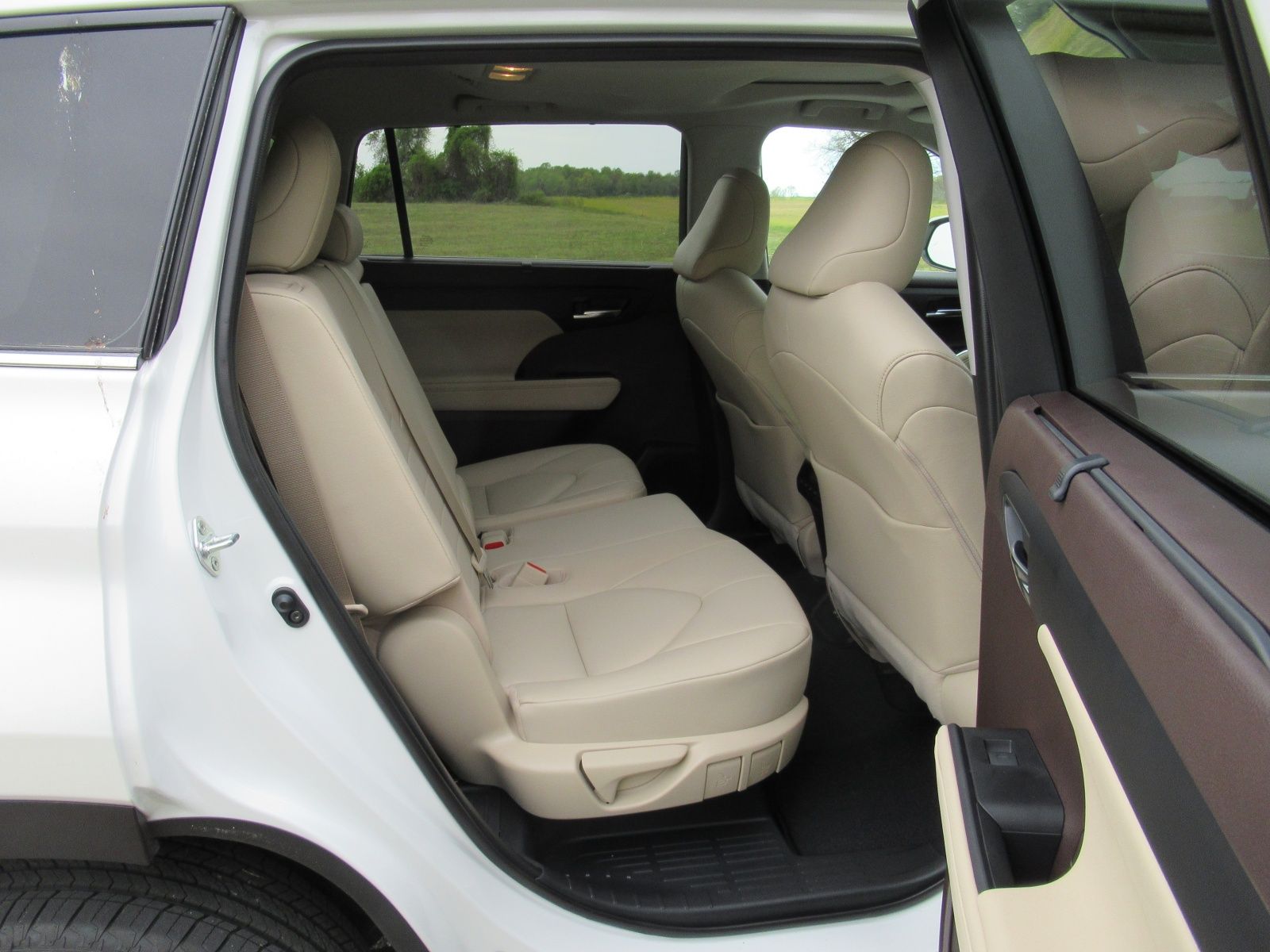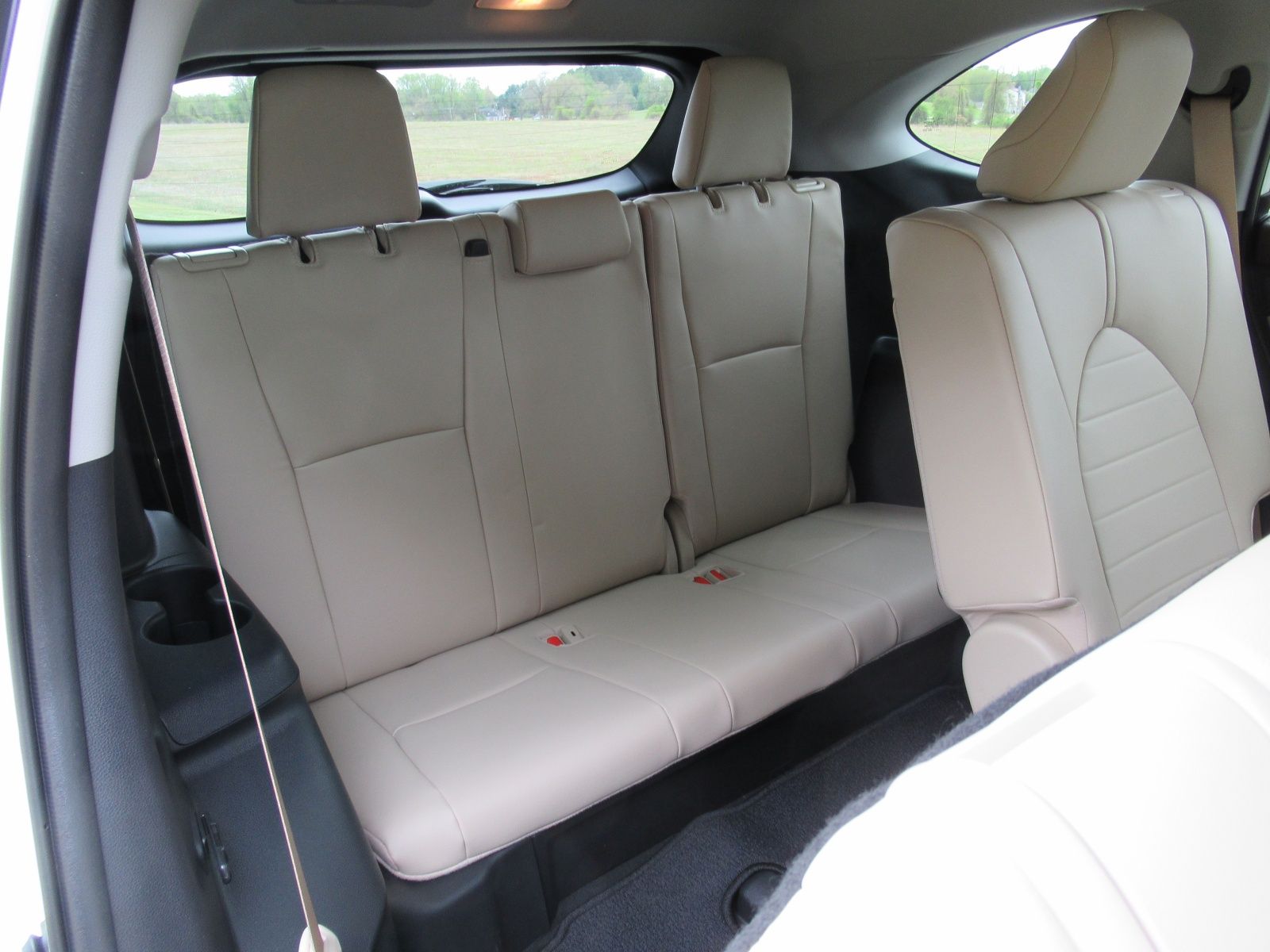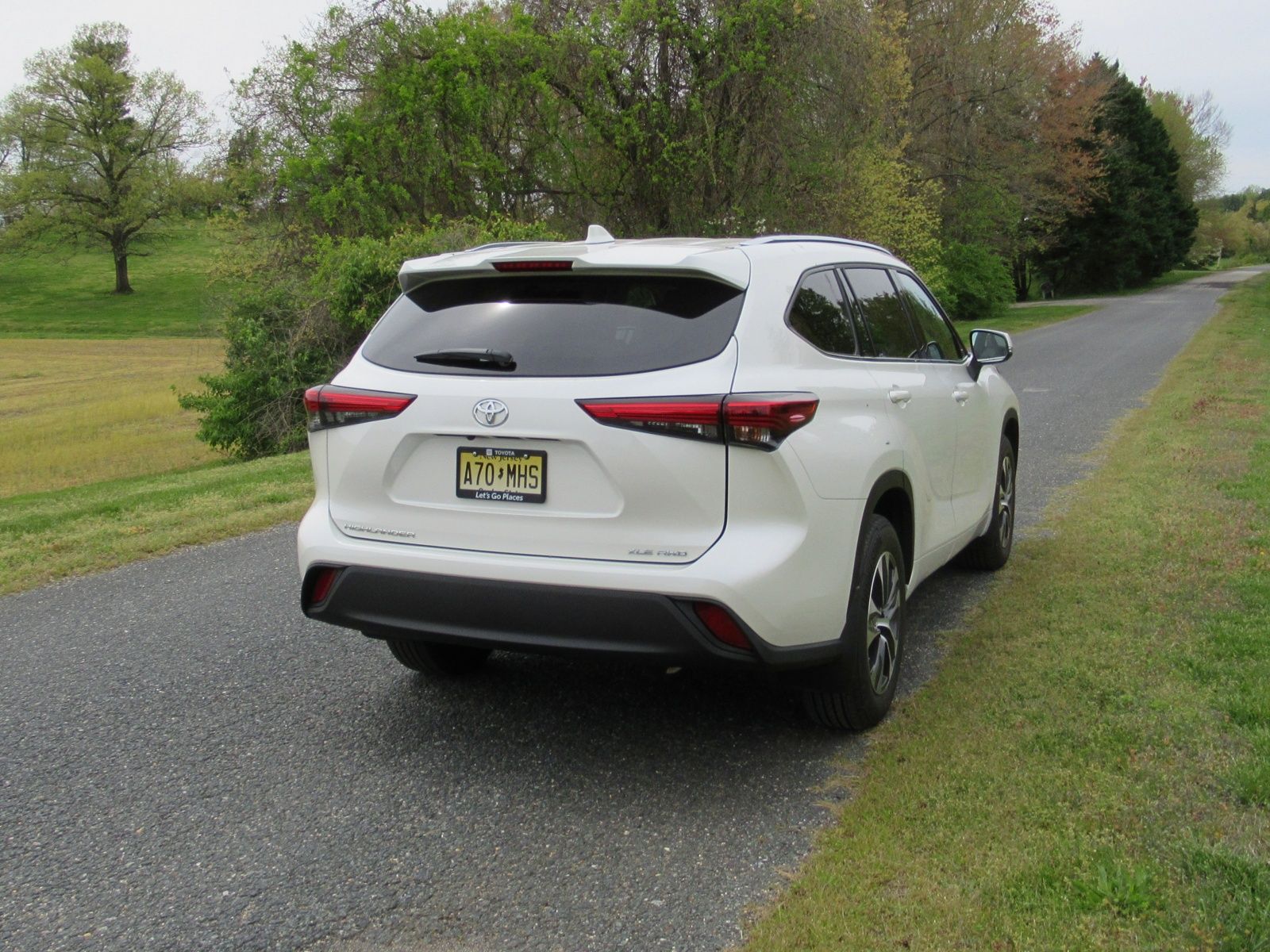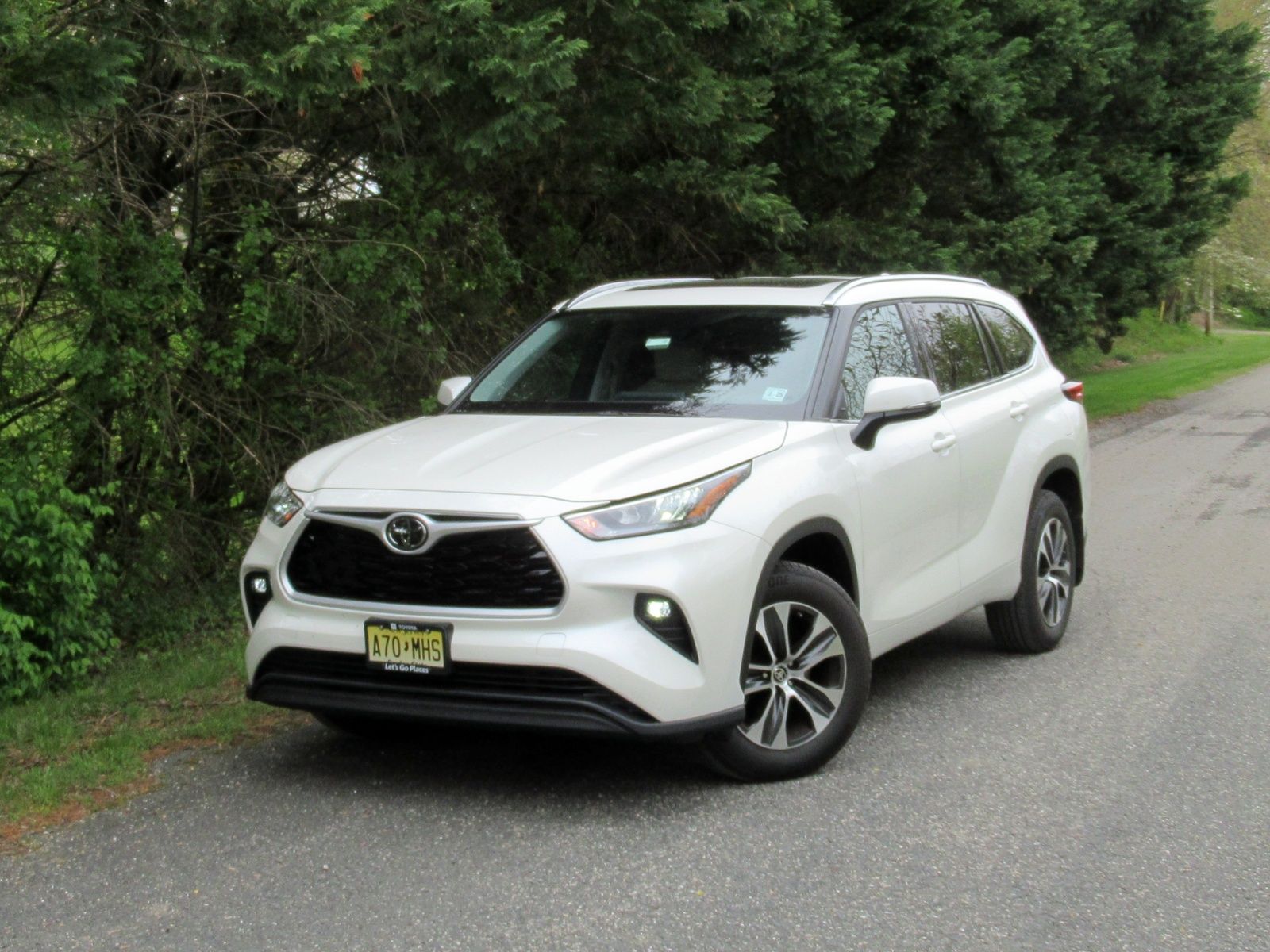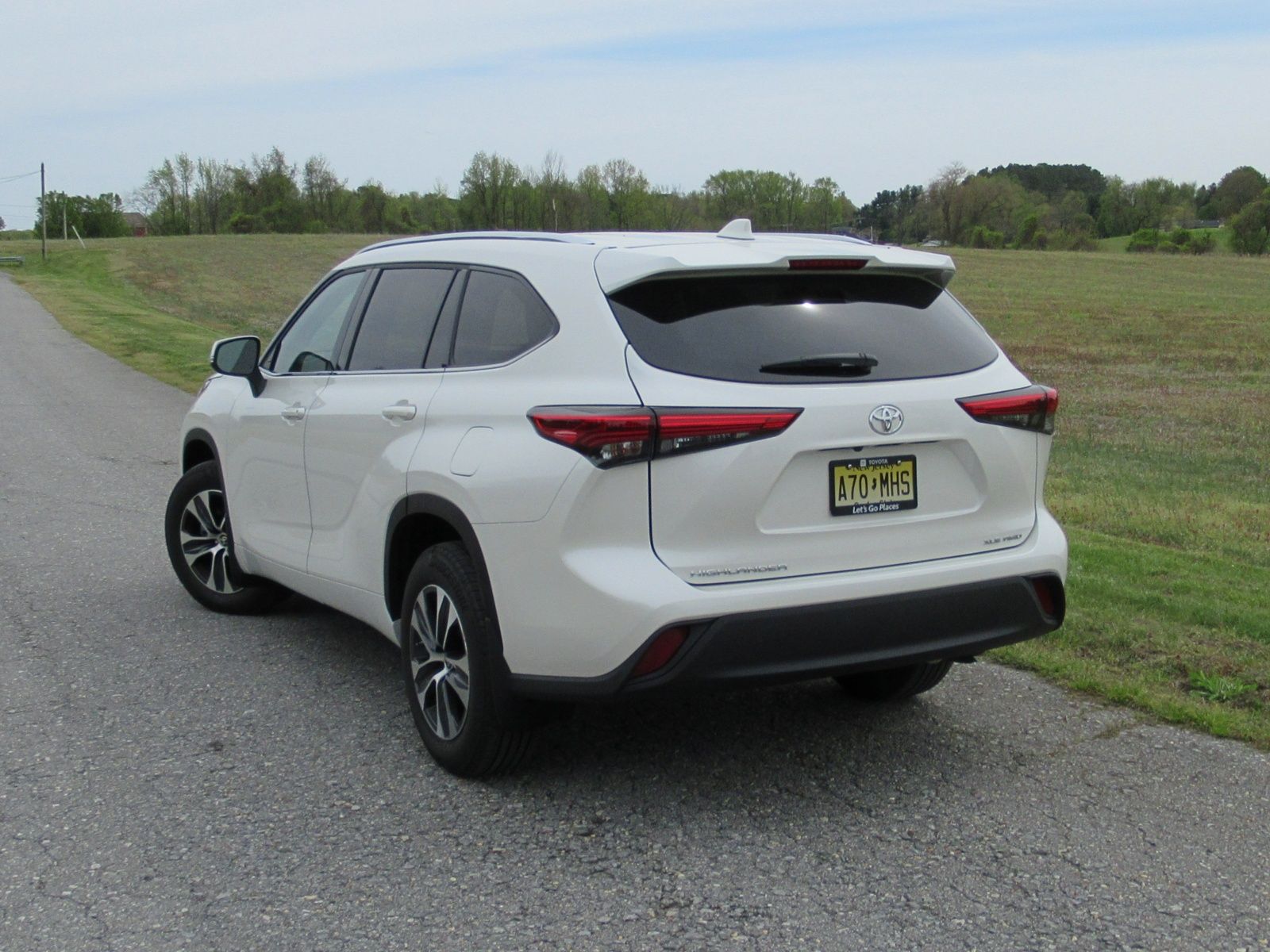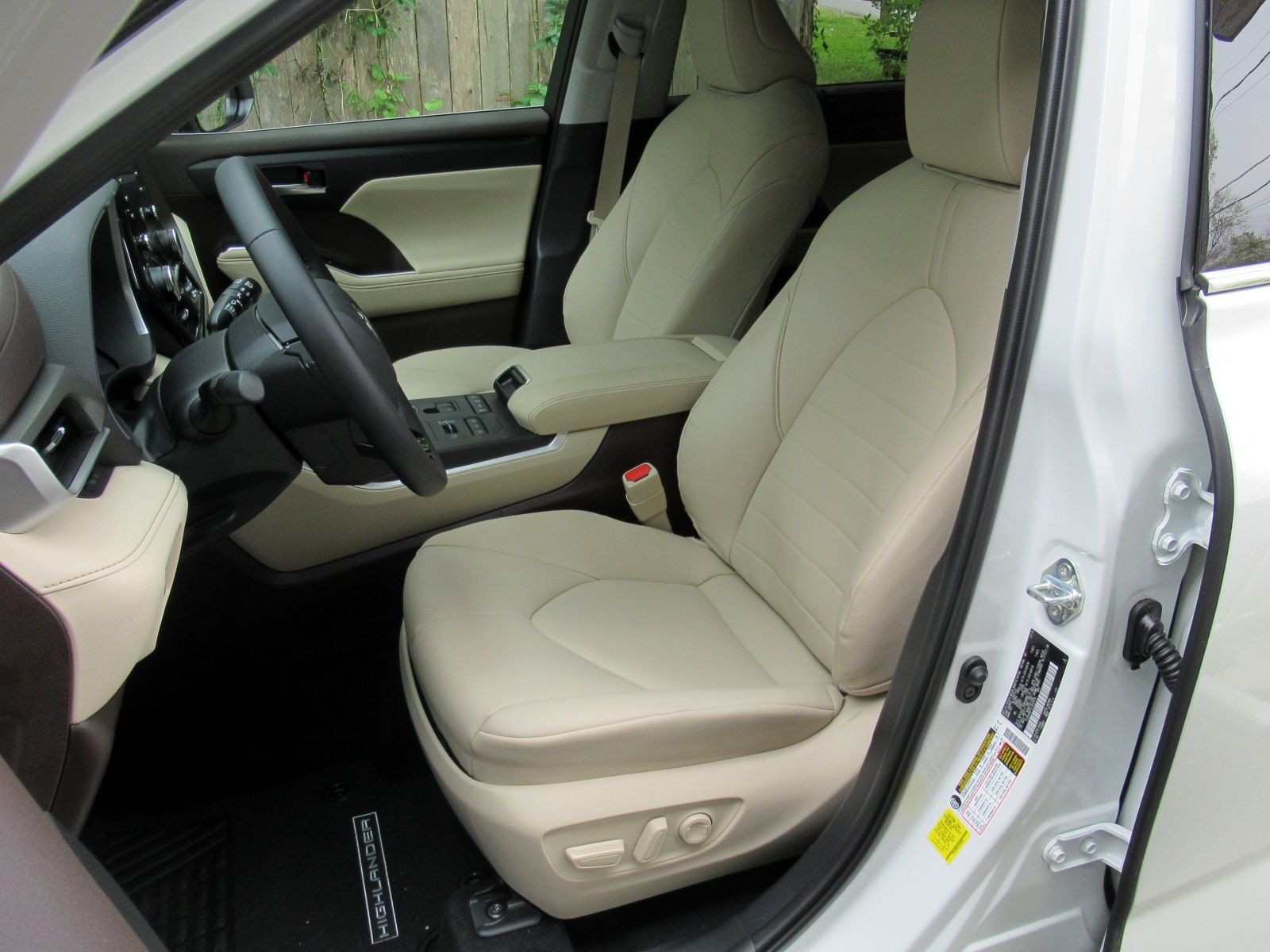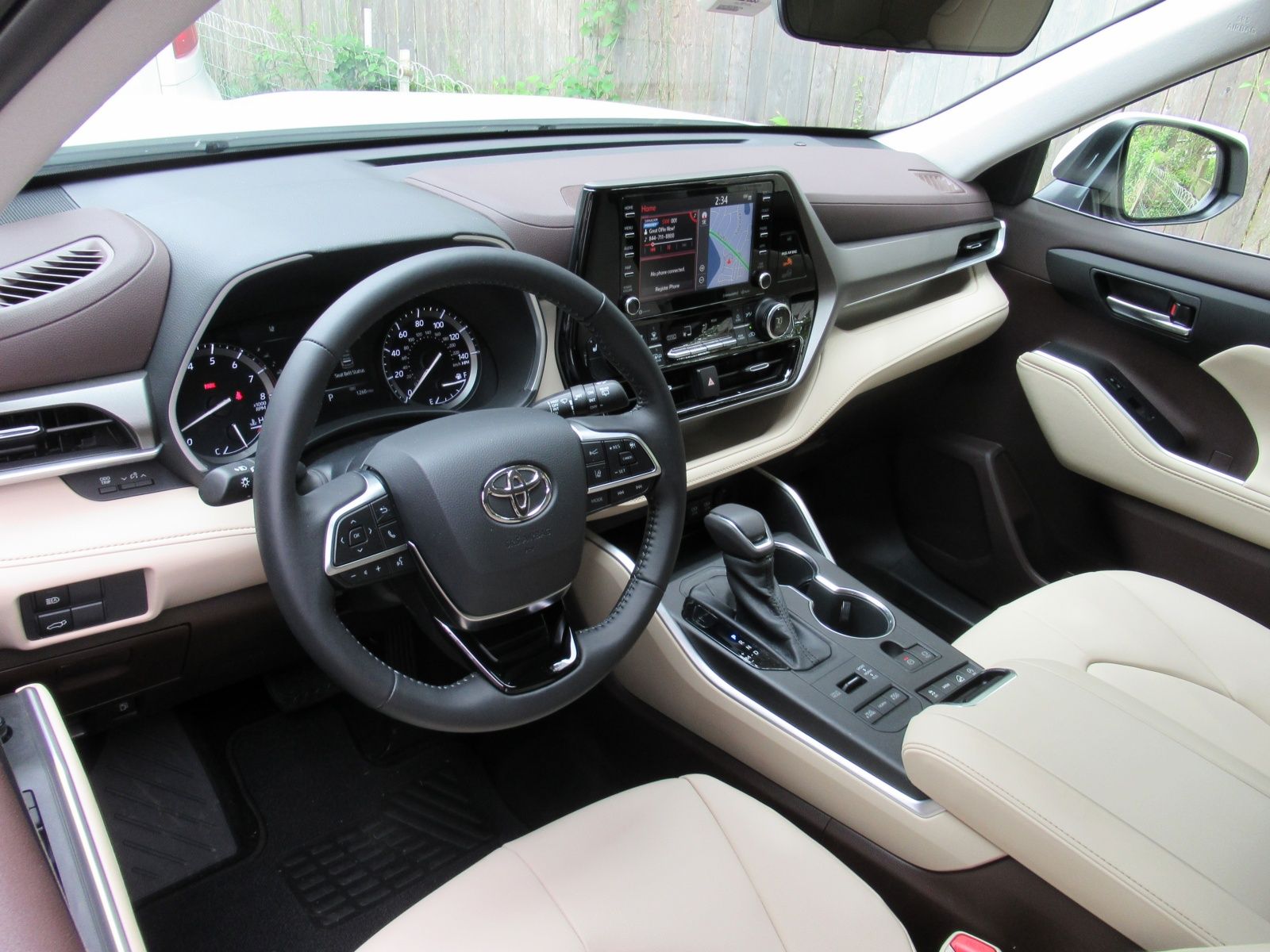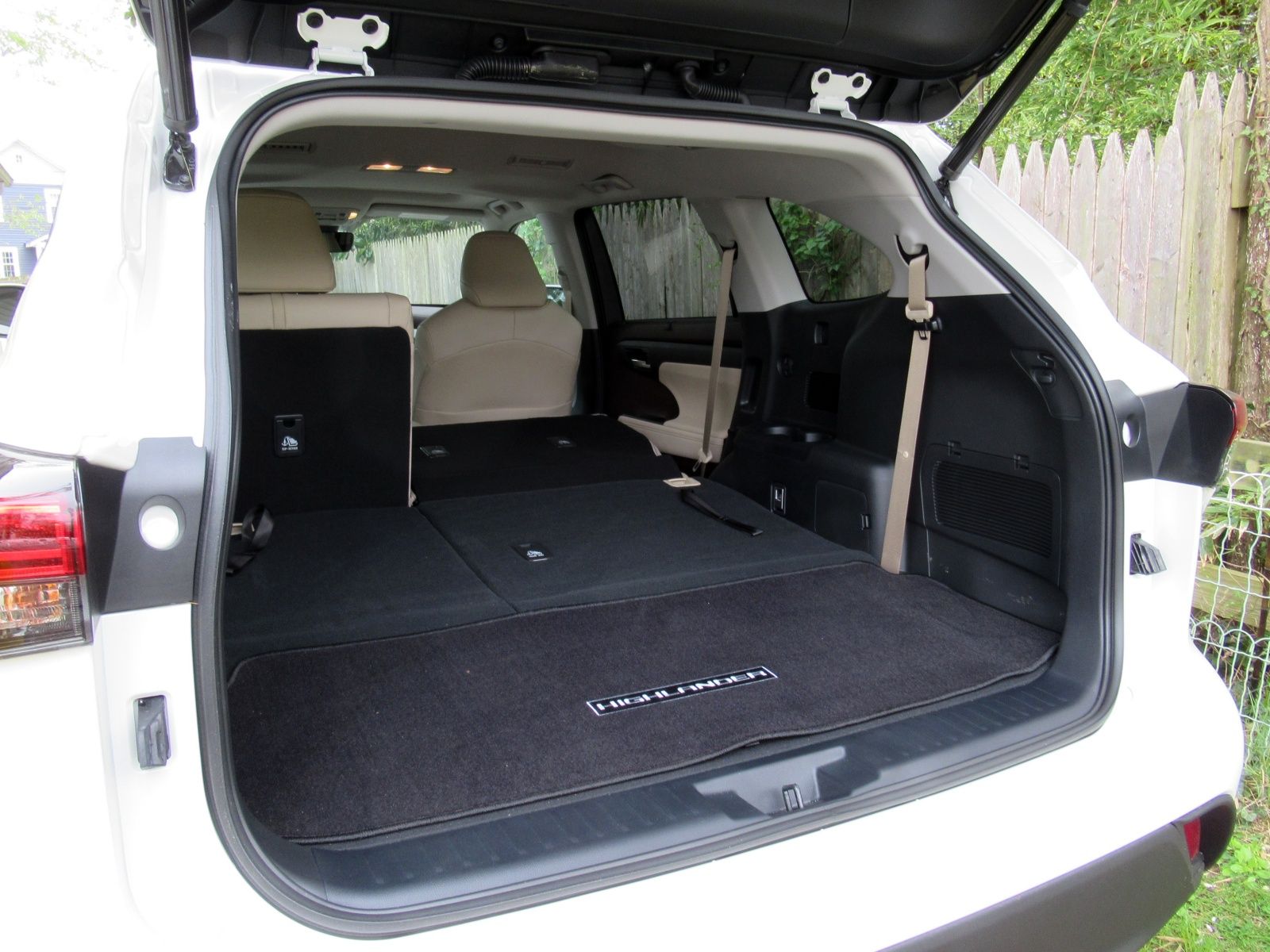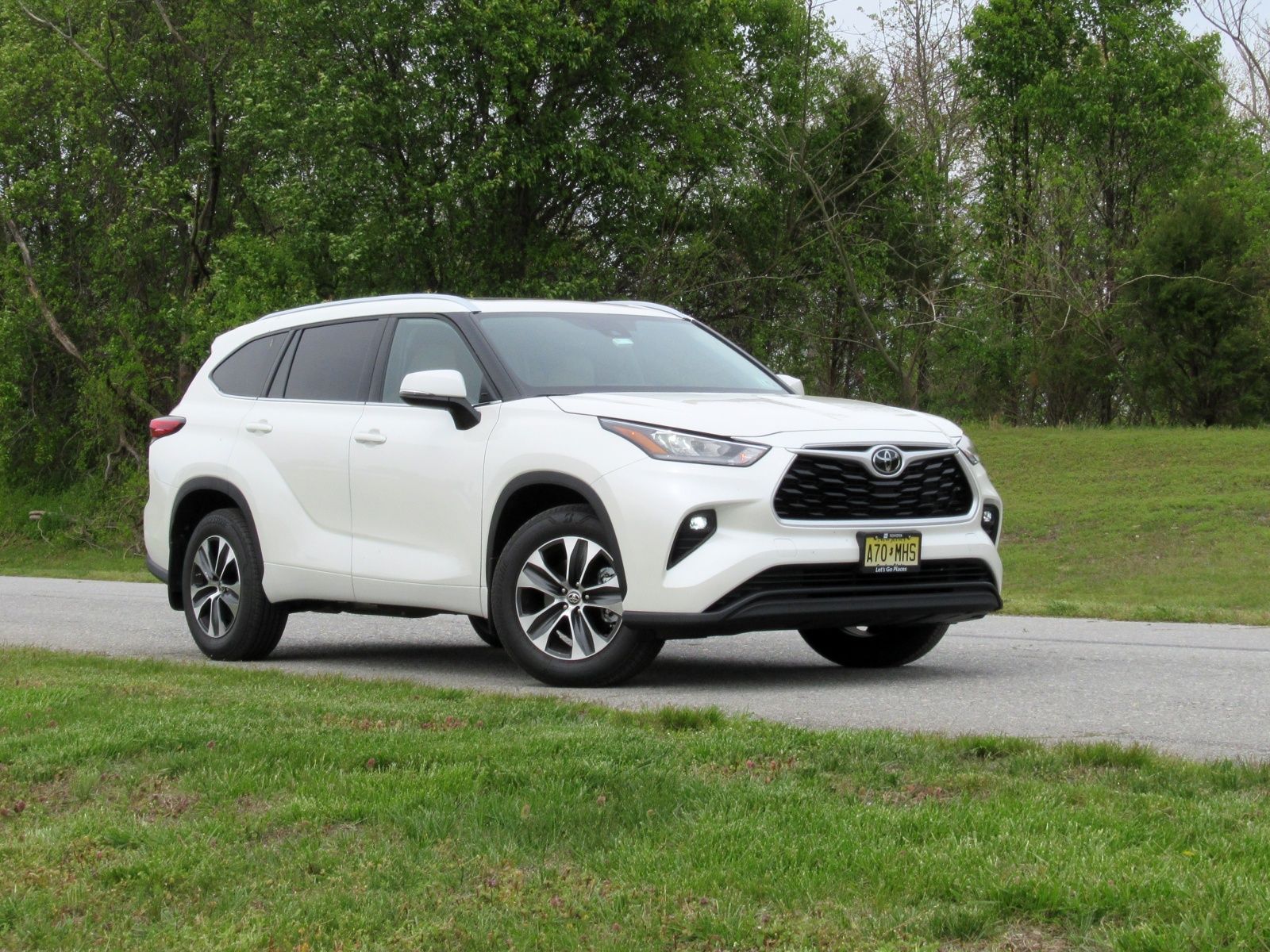Last year, the Toyota Highlander was in its final model year of a generation that wasn’t great even when it was new. This three-row crossover lacked the spaciousness, slick driving manners, extra-easy ergonomics, modern infotainment, and upscale interior details of the latest competitors. Yet by a healthy margin, it outsold every other seven-seat vehicle in the country. Buyers were drawn to a trusted name, and even if the competition might have been more impressive, loyal customers didn’t find enough wrong with the Highlander to try their hand with, say, a Mazda CX-9 or Kia Telluride. Now, there’s a new Highlander, and it’s time to see where Toyota has made marked improvements.
2020 Toyota Highlander - Driven
- Make: Array
- Model: 2020 Toyota Highlander - Driven
Which is not to say that Toyota didn’t do anything — this is a convincingly improved crossover, and we can’t point to anything major that took a step back during the redesign. It got bigger and roomier, yet more maneuverable and more fuel-efficient. Its dashboard became more stylish and higher-tech, yet also more user-friendly. Its ride quality improved, yet so did its handling. And its exterior design became more modern, adding some trendy curves compared to its boxy, straight-lined predecessor.
But if you’re going to compare the new Highlander to the competition, it’s harder to see the best-seller ingredients. Few of its strong points are stronger than competing three-row crossovers’, and many of them are still weaker. The Highlander is roomier than before, but it still has less cargo space or third-row-seat room than key competitors. The Highlander is more luxuriously finished than before, but it still throws in some materials that feel unworthy of its price tag. The Highlander’s infotainment has improved, but mostly to catch up to today’s minimum standards. And what’s more, Toyota is commanding a price premium for the privilege to drive one: At $34,600 and up, it’s more expensive than most of its competitors. The gas-electric Highlander Hybrid model promises incredible fuel economy for a three-row crossover, but our V6-powered test vehicle isn’t as otherworldly. We spent a week in the redesigned Highlander, and here are the full details of what we found.
2020 TOYOTA HIGHLANDER - DESIGN
The proportions carry over; it’s a couple inches lower and narrower than a Kia Telluride, Ford Explorer, or Honda Pilot, and a big nose still overwhelms the small greenhouse. The headlights are smaller and have a more rounded shape, but they still sit up high astride a big vertical grille. The taillights are similarly slimmer and curvier but in the same position as before: spread horizontally across the rear end. The main cosmetic difference, aside from the detail adjustments, is a bulge that spreads up from the bottom of the rear passenger door to become a flared rear fender. (Toyota will use the same design element on the redesigned 2021 Toyota Sienna minivan, another Highlander platform-mate.) Overall, the Highlander avoids looking bulky or macho, unpretentiously serving as a family-hauler — not a rock-crawler or performance machine. The sport-themed SE model is no longer available.
Inside, the Highlander’s dashboard is dressed up with many shapes and colors. Our tested mid-level XLE model had beige upholstery on the seats and a swath of the dash, plus areas of the door panels and center console. Most of the doors and the upper dash were maroon, with silvery trim on part of the dash and shiny black plastic surrounding the center stack controls. Unlike many new cars, the touchscreen infotainment system is mostly embedded into the dashboard rather than perched on the top; overall, the screen placement, the way the dashboard swoops away from the screen onto the passenger side of the dash, and the basic control layout are familiar to last year’s Highlander.Still, there’s more downscale plastic than we’d like at our test car’s $44,498 sticker price.
The biggest upgrade comes to the infotainment system and control layout. On the previous generation, the Highlander had knobs that were too shallow to easily grasp, and some touch-sensitive controls were fussy. Plus, the dash curved away toward the windshield, making some buttons and knobs hard to reach. That’s all been rectified. Also, Toyota has moved to its latest-generation infotainment system, bringing sharper graphics, superior responsiveness, and Android Auto and Apple CarPlay smartphone integration. The 8-inch screen found on our test car (and most of the Highlander lineup) is nothing special for the class, but it’s generally unobjectionable — neither beautiful and lightning-fast, nor cumbersome and sluggish. Meanwhile, the best-equipped Highlanders use a newly available 12.3-inch whopper, which is the biggest infotainment screen in the class. The larger screen lets you see multiple pieces of info at once rather than swapping among views. You can even look at your Apple CarPlay or Android Auto app next to one of the car’s built-in displays. However, the bigger unit also robs space for the useful hard buttons that flank our test car’s screen; they’re instead clustered in a clump below it.
2020 TOYOTA HIGHLANDER - UTILITY
Toyota made the redesigned Highlander 2.4 inches longer than before, helping address its skimpy cargo accommodations behind the third-row seat.. That’s a 16 percent bump, and it makes the Highlander more competitive in its segment — though still on the smaller end. Figures get more competitive once you start folding down seats: 48.4 cubic feet behind the second row (up from 42.3) and 84.3 cubic feet behind the front seats (up from 83.2). You no longer get a separately opening window glass, a handy feature on the old Highlander that let you quickly open and close the rear windshield rather than wait for the full liftgate to power itself open and closed. Hands-free operation is now available, at least. For extra space, the gas-only Highlander can tow 5,000 pounds, in line with the competition. The Highlander Hybrid is less powerful but manages a still-decent 3,500 pounds.
The driver and front passenger enjoy comfortable, supportive seats. Our XLE test vehicle has hardy yet not cheap-feeling leatherette upholstery, while pricier models upgrade to posher leather. There’s ample cabin storage up front, including in little nooks carved out of the dashboard. The second row has generous legroom when you’ve maximized its rearward fore-aft travel, and unlike in a Kia Sorento, second-row passengers can even up give up some of their space to the third row without being too cramped. Still, the Highlander’s third row remains on the small side for the segment — well behind larger rivals like the Kia Telluride, Hyundai Palisade, Chevrolet Traverse, and Volkswagen Atlas, and even competitors Subaru Ascent and Honda Pilot that are sized closer to the Highlander. That’s been a Highlander weak point ever since Toyota retrofitted a third row into the first-generation model back in 2004. This means the Highlander feels less bulky than most three-row crossovers while still offering seating for up to eight passengers — an appealing combination for many buyers — but also that you’ll be more pinched if you try to use all that capacity.
On the tech side, the Highlander’s interior is available with features that include five USB ports, an available wireless smartphone charger in the center console, Toyota’s “Easy Speak” in-cabin intercom, and a built-in Wi-Fi hotspot. A built-in rear entertainment system is no longer available, but handheld devices make more sense these days anyway.
2020 TOYOTA HIGHLANDER - DRIVING EXPERIENCE
The new model is a step up from its predecessor, which felt less substantial and buttoned-down than the new 2020, and whose steering felt less connected to the wheels. Even so, the new Highlander shudders over bumps rather than absorbing them with muffled thumps, and the engine can rev loudly even when you’re trying to accelerate gently. The ride is decently quiet but not hushed, at least without the extra soundproofing that’s included on top trim levels. Overall, it’s comfortable and it’s easy to drive, but it makes no impression of a luxury vehicle.
And it almost goes without saying, but the Highlander also offers little to tempt a driving enthusiast. It’s maneuverable for an eight-passenger vehicle — smaller than most competitors, and with an impressively tight 37.4-foot turning circle, which is an improvement over last year’s Highlander even though the vehicle grew a bit in the redesign. And Toyota has dropped last year’s weak base four-cylinder engine in favor of a carryover V6: a 3.5-liter making 295 horsepower and 263 lb-ft of torque, respectable numbers for the segment. But while handling won’t leave you white-knuckled, the Toyota doesn’t deliver the verve you’d find a Mazda CX-9. If you don’t test any competitors, you might think this is just how three-row crossovers have to drive; it’s not.
With the V6, the Highlander proved quick enough for stress-free acceleration, but no thrill ride. Gas mileage is excellent for the class, though: 21 mpg in the city, 29 mpg on the highway, and 24 mpg overall with front-wheel-drive, and 20 city/27 highway/23 combined with all-wheel-drive. That beats even less-powerful competitors, and trumps a number of models by double-digit percentages. We hit the EPA average with our AWD V6 test vehicle. The hybrid is even more impressive; Toyota switched its gasoline engine from last year’s V6 to a four-cylinder, giving up some speed for massive mileage jump. That seems like a wise choice, especially given that even the 2020 Highlander Hybrid makes a decent 243 hp. EPA ratings are 36 mpg city and 35 mpg highway with front-wheel-drive, and about 1 mpg less with all-wheel-drive, depending on the trim level. That’s better than even the compact Toyota RAV4 Hybrid managed until last year.
2020 TOYOTA HIGHLANDER - PRICING
As we mentioned, the Highlander is on the pricey side among three-row crossovers, despite being smaller than most of its competitors. This isn’t a stripped-down model that Toyota only sells to advertise a lower base price. Standard features include a power-adjustable driver’s seat, three-zone automatic climate control, a six-speaker sound system, 18-inch alloy wheels, LED headlights, an 8-inch infotainment touchscreen, keyless entry with push-button start, the full complement of five USB ports, and a suite of advanced driver aids: a forward collision warning with automatic emergency braking, with pedestrian and bicyclist detection; a lane-departure warning with automatic steering corrections; adaptive cruise control; and automatic high beams. All-wheel-drive costs $1,600 extra compared to the standard front-wheel-drive. For another $2,200 ($36,800 and up), the LE model brings a few additional safety, convenience, and luxury features: a leather-wrapped steering wheel, a power liftgate, and blind-spot monitoring with a rear cross-traffic alert; all-wheel-drive is again $1,600 extra.
We tested the mid-level XLE, which starts at $39,600 with front-wheel-drive and $1,600 more with all-wheel-drive. It adds leatherette upholstery, heated front seats, a wireless smartphone charger, an auto-dimming rearview mirror, a moonroof, second-row sunshades, and the option for second-row captain’s chairs instead of a bench seat. Our test vehicle added $1,040 for a factory navigation system, $425 for an extra-cost Blizzard Pearl paint job, $395 to protect said paint, and $318 for floor mats, hitting a total of $44,498. That’s a luxury-level price tag for a car that doesn’t look or feel especially luxurious, or include features like genuine leather, heated rear seats, or a premium audio system.
The Limited ($43,650 and up) adds some of those features, and more: leather upholstery (for the first and second row), ventilated front seats, a heated steering wheel, an 11-speaker JBL sound system, 20-inch wheels, and front and rear parking sensors, and the XLE’s navigation system appears as standard equipment. For $1,050, you can upgrade from the 8-inch infotainment screen to the big 12.3-inch unit; you also get a surround-view parking camera. AWD costs an extra $1,950. Then the Platinum ($46,850) adds the bigger screen as standard equipment while also bringing rain-sensing windshield wipers, a head-up display, a rearview camera mirror, heated second-row seats, a panoramic moonroof, and adaptive headlamps. Add all-wheel-drive for $1,950, floor mats for $318, and the $1,120 destination charge, and that makes the Highlander a $50,000-plus SUV. Now, you can push some competitors that high, too — but most of them feel more upscale than the Toyota, offer more amenities, have more space, or all of the above.
The Highlander Hybrid doesn’t offer a base L model, but otherwise it costs about a $1,500 premium over each equivalent V6 Highlander trim. That’s less of a price premium in the past because of its new switch from an exuberantly powerful V6 to a more economical four-cylinder gas engine, and both of those changes should broaden the vehicle’s appeal.
2020 TOYOTA HIGHLANDER - KEY COMPETITORS
2020 Hyundai Palisade and Kia Telluride
The Hyundai Palisade and Kia Telluride are two all-new models that have exploded into the big crossover space to emerge as instant class leaders. These mechanical cousins offer an unbeatable combination of spaciousness, luxury, and value — they’re elegantly designed and poshly finished, yet they’re also among the best in their class for spaciousness and family-friendly design. They feel more luxurious than the Highlander (and most other competitors) while also having more room and costing less. They only slip to average for fuel economy — about 2 mpg behind the V6 Highlander — and handling agility; while not dismal in either way, these aren’t fun-to-drive fuel-sippers. And the Highlander is slightly smaller and more maneuverable; the Koreans have a wider turning radius and are about 2 inches longer and wider, and about 1 inch taller. The Palisade and Telluride are largely identical beyond their aesthetics (the Kia takes a more SUV-like appearance while the Hyundai is slightly more car-like inside and out), and the Palisade has been slightly easier to find in stock at dealerships; as of this writing, the Telluride is infamous for long waiting lists.
Read our full review on the 2020 Hyundai Palisade and Kia Telluride
2020 Honda Pilot
The Honda Pilot is one of the earliest competitors to the Toyota Highlander, but this rivalry has lost some of its luster. The current Pilot is due for a redesign and has fallen behind for its cabin ambiance, agility, and braking. This is a smooth, quiet crossover that feels bigger and bulkier than the Highlander — and also more like a minivan than a rugged SUV. Between the Highlander and Pilot, you’d pick the Toyota for greater maneuverability and the Honda for more room. But the field is much broader than these two models, and you might find a competitor that’s stronger than either.
Read our full review on the 2020 Honda Pilot
2020 Subaru Ascent
The Subaru Ascent is a more-modern take on the Pilot’s family-focused vibe. It’s also smoother and quieter than the Highlander, and it also has richer interior materials (though a near-faultlessly user-friendly dashboard design). It’s more fuel-efficient and more upscale and modern inside than the Pilot, too. Also notable, this Subaru has more room than the Highlander without feeling quite as bulky as some other competitors, and especially if you know you want all-wheel-drive (standard equipment on the Subaru), it’s less expensive. Toyota counters with a V6 engine whose EPA ratings match or exceed the Subaru’s less-powerful four-cylinder.
Read our full review on the 2020 Subaru Ascent
2020 Ford Explorer
Like the Highlander and Pilot, the Ford Explorer is a sales leader in the three-row crossover segment. It offers a tougher, sportier vibe than the family-focused Highlander, while still offering useful three-row seating capacity. Still, it’s less roomy than some competitors (if not the Highlander), has a less upscale interior than most, and is expensive — even compared to the Toyota. Also, seating capacity tops out at seven rather than the Highlander’s eight. The Ford’s standard four-cylinder engine is the class’s closest challenger to the V6 Highlander for marrying performance with fuel economy, and the Explorer also offers the class’s only other hybrid. However, the latter skews toward performance over fuel efficiency and is available only on pricey luxury trim levels.
Read our full review on the 2020 Ford Explorer
2020 Mazda CX-9
The Mazda CX-9 is bigger than the Highlander, but if you like a smaller feel without needing to squeeze into a physically smaller garage, the Mazda could be your winner. Delightfully sporty handling and an intimate seating area — with a high center console like a sports sedan, rather than an SUV’s wide-open feel — make it easy to forget that you have two rows of seats behind you. But you don’t have to want a sporty vibe to like this Mazda, as the CX-9 is also agreeably smooth and comfortable, and its interior is luxuriously finished. True, the CX-9’s cargo space is near the bottom of the class (with the Highlander’s) and its third row is only a little bit more habitable, but the Mazda is a family car that can also look and feel like a luxury car — and for less money than the Highlander. Toyota has the Mazda beat for infotainment, though, and the CX-9 can’t seat eight passengers.
Read our full review on the 2020 Mazda CX-9
2020 GMC Acadia
Providing a legitimately downsized footprint, the 2020 GMC Acadia is a smaller, more upscale, and more SUV-looking version of the extra-spacious Chevrolet Traverse. It delivers the driving manners of a crossover, but with bolder, blockier styling that doesn’t scream “family bus.” And its newly available turbocharged four-cylinder engine delivers decent pep while matching the Highlander’s fuel efficiency. However, it’s even less spacious than the Toyota and — once you add widely available equipment that inflates the tempting $29,800 base price — also more expensive than most competitors. And like the CX-9 and Explorer, the Acadia’s seating capacity stops at seven rather than the Highlander’s or Traverse’s eight.
Read our full review on the 2020 GMC Acadia
2020 Kia Sorento
Another three-row crossover that minimizes its bulk is the Kia Sorento, which also brings affordable pricing and a luxuriously finished interior. But while the Highlander has two roomy rows of seats and a cramped third row, the smaller Sorento feels pinched even in the second-row seat unless the front seats are well forward. While the Highlander can work as a four-person family car that can squeeze in a few more people in a pinch, the Sorento is less capable even in that scenario — compact five-seat crossovers like the Honda CR-V and Nissan Rogue offer more generous space for five people than the Sorento. Maximum seating capacity is seven in the Sorento. A redesigned Sorento is coming later this year as a 2021 model, bringing modernized styling and a higher-tech interior, though we don’t expect much change to its interior spaciousness.
Read our full review on the 2020 Kia Sorento
2020 TOYOTA HIGHLANDER IN A NUTSHELL
For people who only wanted a better Highlander — and there are surely many — the 2020 model can’t disappoint. It has a host of improvements without compromising its appeal to loyal owners. But it faces a narrower path to success when faced up against a host of strong competitors. While we’ve seen some auto journalists conclude that because the Highlander provides simple, straightforward family transportation, it is therefore a leader in providing straightforward family transportation. We disagree. The Highlander is just one of many three-row crossovers to meet those basic criteria, while many of the others go further. The Highlander does edge out the class norm for its smaller footprint, tighter turning radius, and thriftier fuel economy, and that size and maneuverability will make it the right fit for some buyers. Many others would do well to broaden their horizons. The Highlander Hybrid is something special in its class, with economy-car fuel economy and big-SUV space, but the V6 model has less to distinguish itself with.

